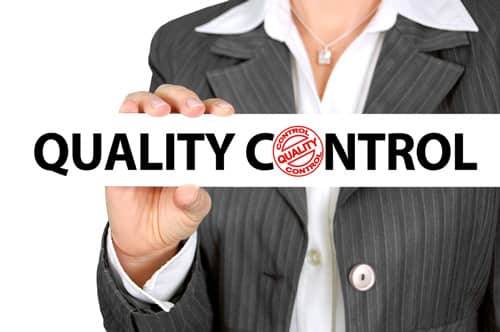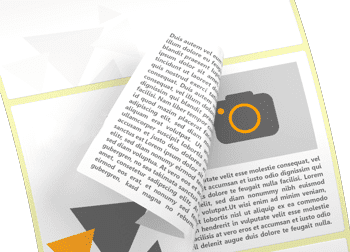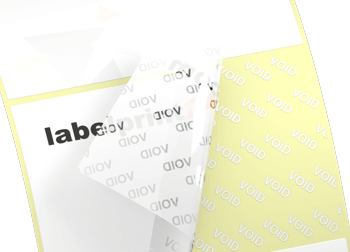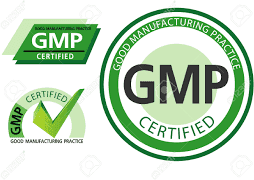

-
Products
- Labels
- Folding boxes
-
Shipping boxes
- Hinged-lid box - Large letter boxes, maxi letter boxes, DHL
- with adhesive strip - Large letter boxes, maxi letter boxes, DHL
-
Folding cartons
- with tuck-in flap - FEFCO 0211
- with tuck-in flap - FEFCO 0210
- with snap lock base - FEFCO 0215
- with crash lock base - FEFCO 0713
- Cardboard box - FEFCO 0201
- Corrugated cardboard sheets - FEFCO 0110
- One piece folder - FEFCO 0401
- Reinforcement-Inlay
- Slipcases
- Full overlap slotted container - FEFCO 0203
- Laminate tubes
- Package inserts
- Pouch packaging
-
Service & Help
 Our printing experts will be happy to help you with any questions you may have about your order. Simply use our customer support.
Our printing experts will be happy to help you with any questions you may have about your order. Simply use our customer support.
Support Newsletter -
About us
 Our printing experts will be happy to help you with any questions you may have about your order. Simply use our customer support.
Our printing experts will be happy to help you with any questions you may have about your order. Simply use our customer support.
Support Newsletter -
Contact us
- Major customers
Special labels
Are you looking for a special label that can also withstand special conditions in production, storage, processing and transport as a multi-layer label? Order special labels from Labelprint24.com!
- Perfect adhesion on various substrates
- Das ideale Etikett für besondere Aufgaben und Einsätze
- First-class print and processing quality
Discover the wide range of labels from Labelprint24.com!
-
ProductionFrom 2 days
-
MaterialFoil / Paper
-
Format100% Free
-
OptionFoil finishingVarnish
Select kind of product
Special labels differ from "simple" labels in that they have one or more very special properties that enable the special labels to fulfil a specific function. You could also say: special labels are something like the specialists among labels, they are now the specialists. What kind of special function is involved and whether special labels are the optimal solution for it depends on many factors.
Labels for special applications
For customers from industry, trade, logistics, commerce and resellers, labelprint24 offers various types of special labels that are specifically tailored to the customers' needs. In most cases, the special labels must be able to withstand special conditions in production, storage, further processing, transport and use. Therefore, special labels are subject to special requirements with regard to the materials used, adhesive properties and resistance. The shape of labels also sometimes deviates from the standard, which is why special labels often have special formats.
Overriding factors for special requirements:
- the respective application purpose
- Special features of the industry
- external environmental conditions
- the surface to be covered/surface condition.
- Migration properties and food suitability
- extreme production conditions
Special labels for difficult surfaces
Labels must adhere well, full stop. However, the realisation of this requirement is not a matter of course.
- All types of labels adhere particularly firmly to smooth surfaces such as metal or glass.
- The strong adhesive on the underside of the label can "cross-link" particularly well with the substrate here.
Adhesion is generally lower on an untreated surface. Special labels must be used here. There are many substrates to which conventional acrylic adhesives simply do not adhere firmly enough.
Special adhesives are used for somewhat more difficult surfaces:
- Very porous surfaces
- rough surfaces
- humid environment
- dusty environment
- made of rubber (car tyres!)
- oily (machine parts)
- greasy (food)
Labels with special adhesives are also used for curved and unevenly shaped surfaces (vacuumed food). In these cases, a special rubber or hot melt adhesive of the special labels usually ensures optimum adhesion.
These modern high-tech pressure-sensitive adhesives are composed of several different types of adhesive for this purpose. This mix of materials ensures good initial adhesion and that the adhesive strength increases over time.
- It always takes a certain amount of time for the full adhesive force of the label adhesive to develop.
- However, the actual application time and the maximum application temperature depend on the label face material, the substrate and the ambient conditions.
- There are many different adhesives, from removable to ultra strong.
- Pressure-sensitive adhesives are pressure-sensitive, and the best adhesive effect only sets in over time.

Special labels for extreme environments
Many special labels are needed for use in extreme conditions in industry. When handling chemicals, machines or other hazardous substances, it is often extremely important to reliably present information and safety instructions. Particularly in industrial production, packaging and labelling, the environmental conditions are sometimes very extreme. The special labels have a particularly tough and enduring job here. For example, high resistance to temperatures of minus 190 to plus 300 degrees Celsius is required, as is the case with printed circuit board labels; for less extremely cold temperatures, there are deep-freeze labels. High resistance to other environmental influences is also often required. The labels must be tough, dimensionally stable, waterproof, grease and oil resistant, weatherproof and UV resistant.
For special labels with these specifications, film labels are almost exclusively used as the base material. Paper would quickly be destroyed here. Special labels made of film, on the other hand, can be printed well, are tear-resistant, scratch-resistant, stretchable and resistant to many external influences, including UV radiation. An example of this are labels used for labelling hazardous goods and containers in the chemical industry. Good legibility and dimensional stability after long transport, e.g. on ships or by rail. Seawater and chemical resistance are an absolute must for these chemical labels.Special labels with large information area
The space available for the print motif is very small on most labels and is limited to the surface of the upper label layer. However, our customers often need labels on which a larger amount of information can be transported:
- Operating instructions
- Dosages
- multilingual texts and much more.
In these cases, too, there are various special labels that effectively solve this requirement.
Labels with back printing
In the case of labels with reverse side printing, motifs are printed both on the top layer and in the adhesive area. In principle, this doubles the available printing area. The prerequisite for using these labels, however, is that the labels are stuck onto a transparent surface (glass, plastic). The print motif on the adhesive side can be seen through the material.
Wrap-around labels
Wrap-around labelsand wrap-around labels with reverse printing are wrapped several times around a round container (cans, bottles) and sealed with lamination. With these special labels, the space available for information depends on the length of the wrap. Wrap-around labels can be printed not only on the front but also on the inside. This increased amount of space is mainly needed for products in the chemical and pharmaceutical industries, and the PE or PP film used is resistant to solvents and other chemicals.
Sandwich labels - also duplex labels / double layer labels/ multilayer labels/ peel-off labels Sandwich labels are multi-layer labels with an information label on a carrier label. Sandwich labels can be printed on two or three label layers at the customer's request. This provides plenty of space for the printed motif. The information label on the top can be removed and reapplied elsewhere.
Sandwich labels are multi-layer labels with an information label on a carrier label. Sandwich labels can be printed on two or three label layers at the customer's request. This provides plenty of space for the printed motif. The information label on the top can be removed and reapplied elsewhere.
- Sandwich labels or promotional labels are ideal for prize draws
- Sandwich labels with 2 printed sides are ideal for promotional purposes
- Sandwich labels with 3 sides are printed on all sides with information in text, graphic or image form.
A special form of sandwich label is the so-called Promotional label. Promotional labels are used exclusively for prize competitions. With this type of special label, codes, collection points, scratch-off areas or prize numbers are hidden inside the label and only become visible when the cover label is removed.
Booklet labels Promotional labels are used exclusively for prize competitions. With this type of special label, codes, collection points, scratch-off areas or prize numbers are hidden inside the label and only become visible when the cover label is removed.
Promotional labels are used exclusively for prize competitions. With this type of special label, codes, collection points, scratch-off areas or prize numbers are hidden inside the label and only become visible when the cover label is removed.
- Multi-layer labels offer plenty of space for additional information
- Booklet labels are the space giants among labels
Areas of application for special labels
Special labels are used wherever conventional paper or film labels cannot be applied. This can have various reasons. For example, the material or the adhesive may not have the right properties. But the shape or composition of conventional labels can also be unsuitable. This is why special labels, which are usually designed for a specific purpose, are used.
For example, low-migration food labels or freezer labels are used for labelling on food. Chemical labels are used to distinguish between different chemicals. Special barcode/QR code labels are used to ensure that printed codes can be read correctly by equipment. Special bottle labels are used to inform about the ingredients of beverages. Care and cosmetic products are often labelled with waterproof cosmetic labels, products for outdoor use with weatherproof labels. The labelling of inventory is done with special inventory labels. Products that are to remain closed are provided with seal labels. These are just a few examples of applications for special labels. There is a wide range of special labels that are suitable for almost every application.
Special labels to protect original goods and property
 Safety labels are also special labels. They serve to protect against tampering and theft or are used as guarantee seals or as property identification in companies. In order for Safety labels to be able to perform these functions, they are provided with a firmly adhering adhesive on the underside of the label.
Safety labels are also special labels. They serve to protect against tampering and theft or are used as guarantee seals or as property identification in companies. In order for Safety labels to be able to perform these functions, they are provided with a firmly adhering adhesive on the underside of the label.
When trying to peel off the paper Safety labels (usually for property protection), the label paper shreds and paper shreds stick to the surface and cannot be easily removed.
When removing foil safety labels or hologram labels, the foil splits and a white writing (VOID) remains on the respective surface. As a residue always remains when trying to remove Safety labels, they are also called Tamper Evident labels.
Special labels for product and patient safety
Labels for pharmaceutical products (medicines) often fulfil more functions than pure product labelling. Here, too, special labels are an ideal solution. Special labels support many processes in everyday medical life, increase convenience and safety for patients and hospital staff. Special labels for pharmaceutical products ensure product and brand protection throughout the entire supply chain. This is particularly important as counterfeits or imitations are increasingly reaching the market for medicines. In refilling processes, removable partial labels take on the function of preventing medication errors. Due to the potential security risk, it is necessary to combine special labels with other covert as well as digital labelling technologies.
Certificates and guidelinesGMP certificate

For some products and sectors/industries (e.g. pharmaceuticals), customers require GMP certification from the manufacturers of special labels. GMP ("Good Manufacturing Practice") refers to the "Good Manufacturing Practice for medicinal products, cosmetics, food and feed".
The GMP rules are laid down in national and international regulations. Key aspects of GMP include requirements for hygiene, premises, equipment, documentation and controls throughout the production process of speciality labels. The aim of GMP is to bring safe, effective and harmless medicines and foods to the market and to protect patients and consumers.
HACCP certification
The Hazard Analysis and Critical Control Points concept (abbreviated to: HACCP concept or HCCP concept, in German: Gefahrenanalyse kritischer Lenkungspunkte) serves to avoid hazards in connection with food that can lead to illness or injury of consumers. These hazards can also occur during the manufacturing process of food labels. For example, through migration or contamination. The traceability of food imported into the EU plays a special role here.

The HACCP concept was originally developed to ensure the greatest possible hygienic safety for astronaut food. A basis for the successful implementation of a HACCP concept is, in addition to the spatial, process-related and organisational prerequisites, above all the correct behaviour when handling food and compliance with GMP. Many hygienic hazards in food handling can be effectively countered by sufficient hygiene education and training of the staff. In addition to the personal behaviour of the staff, the spatial and technical conditions play a very important role in the production of hygienically impeccable products. To this end, the product-specific legal regulations, the rules of good manufacturing practice and the state of the art for the products concerned must be observed. Deficiencies in this regard should be identified and eliminated during regular, systematic inspections.
- Avoidance of hygiene hazards through structural, technical and process-related measures.
- Reduction of existing hygiene risks, e.g. through spatial separation or encapsulation, constructive reduction of the susceptibility of the technology to faults.
- Continuous monitoring of processes and technology at points where malfunctions are to be expected. These are then usually critical control points (HACCP).
Low-migration special labels
.png) If there is one industry where the properties and materials of labels are particularly closely monitored and regulated, it is the food industry. "You are what you eat" - this refers to the substances found in food, such as fats, carbohydrates, proteins, vitamins and minerals. Too much of these can make you ill or obese. But microscopic substances that may enter the food through the packaging after the label is made could do just as much damage when ingested through food. Who wants to eat mineral oil, solvents, adhesives or dyes in their pizza, fish, vegetables and the like? Even if they are only present in very, very small quantities? The problem of migration can be solved with the help of special food labels. This type of special label is also called a low-migration label. Essentially, there are three methods to prevent or minimise migration in labels:
If there is one industry where the properties and materials of labels are particularly closely monitored and regulated, it is the food industry. "You are what you eat" - this refers to the substances found in food, such as fats, carbohydrates, proteins, vitamins and minerals. Too much of these can make you ill or obese. But microscopic substances that may enter the food through the packaging after the label is made could do just as much damage when ingested through food. Who wants to eat mineral oil, solvents, adhesives or dyes in their pizza, fish, vegetables and the like? Even if they are only present in very, very small quantities? The problem of migration can be solved with the help of special food labels. This type of special label is also called a low-migration label. Essentially, there are three methods to prevent or minimise migration in labels:
- A material that is impenetrable to most fabrics is attached to the underside of the labels. This can be a metal foil, for example.
- Multi-layer pressure-sensitive adhesives can also have a migration-preventing layer, see "Herma-Perfect".
- As a third option, only materials and processes are used in label production where migration can be ruled out, e.g. migration-free varnishes or inks.
You already know from experience which materials and adhesive properties you want to use?
.jpg)
- Here you can calculate single-layer roll labels with the largest possible choice of material for your needs.
- Our technical advisors will also be happy to advise you on multi-layer special labels for all industries for your individual application purpose.





 Customer Testimonials: 759
Customer Testimonials: 759





 Roll labels request form
Roll labels request form  Booklet labels request form
Booklet labels request form  Folding boxes request form
Folding boxes request form  Custom made shipping boxes request form
Custom made shipping boxes request form  Package leaflets request form
Package leaflets request form  Laminate tubes request form
Laminate tubes request form 
























